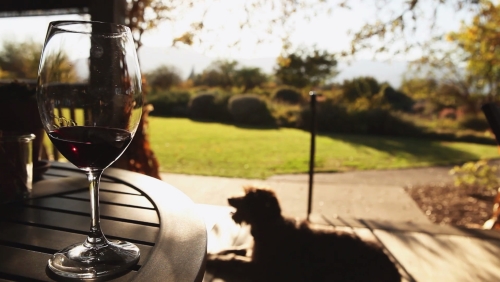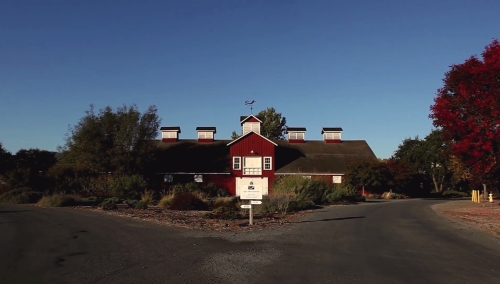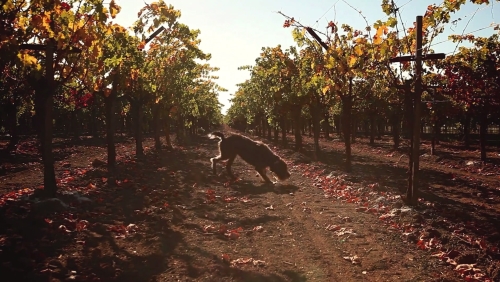DRY FARMING WINERIES DEFY EXPECTATIONS IN CALIFORNIA DROUGHT
Jan. 1, 0001
 Jonah Beer chuckles at the suggestion that Frog's Leap Winery in Rutherford, Calif., is somehow "innovating" by using dry farming techniques to grow its grapes. For those unfamiliar with the practice, dry farming is exactly what it sounds like: no irrigation, no drip hoses. The only water going to the vines is rain water.
Jonah Beer chuckles at the suggestion that Frog's Leap Winery in Rutherford, Calif., is somehow "innovating" by using dry farming techniques to grow its grapes. For those unfamiliar with the practice, dry farming is exactly what it sounds like: no irrigation, no drip hoses. The only water going to the vines is rain water.
Beer, Vice President/General Manager at Frog's Leap, points out that irrigation only came to Napa Valley in the 1970s. Before that, dry farming had been the standard grape-growing practice for over a century, according to Beer. But the decision to rely solely on natural rainfall to nourish his vineyard is not some sort of Luddite appeal to a picturesque past. Rather, Beer sees dry farming as the best, most cost-effective way to grow healthy grape vines and to preserve the unique terroir that first made Napa Valley's wines so prized.
For Beer and Frog's Leap, the reasons for dry farming are three-fold:
Provide the cleanest and brightest expression of terroir
Create the healthiest growing environment to encourage deeply-rooted vines
Grow the longest-lived vines possible.
The end result, as Beer puts it, is "to allow people to sit down, open a bottle and experience that Rutherfordness" unique to the Frog's Leap vineyard.

Photo courtesy Frog's Leap
Dry Farming In-Depth
The farmers at Frog's Leap know quite a bit about grapes, but they recognize their own knowledge pales in comparison to the grape-growing knowhow built into their vines. "Don't pretend you're smarter than the vine," Beer says, before going off on an in-depth discussion of all the variables farmers try to track and control, despite how vines have evolved to naturally manage them without human intervention. Rainfall, lunar cycles, daylight hours, humidity, pests, and a dozen other outside forces factor into grape growth, and according to Beer, human ingenuity is not always up to the task. So he prefers to get out of the way and let the vines do what they do best.
Forcing a vine to survive on the 25 inches of annual rainfall in Napa Valley builds hardier vines, Beer explains. Certainly there is quite a bit of work that goes into it on the human side, and dry farming, like any farming, is "hard work, dusty and hot," – requiring long hours of tilling the earth with spades to prepare the soil to receive the winter rain. But once the rain has fallen, it is up to the grape vines to build a root system strong and deep enough to extract those winter rains from soil up to twenty feet deep.
 Photo courtesy Frog's Leap
Photo courtesy Frog's Leap
The Dirt on Terroir
By pulling water from the deep soil, grape vines gather trace minerals and other nutrients that give a unique taste to the grapes grown in that particular plot. As Beer points out, vineyards that irrigate their fields end up with grapes that begin to taste similar to other fields using the same water, and much of the terroir of the grapes is lost. Dry farming preserves the particular flavor profile of each field, which allows Beer to capture the "Rutherfordness" of his grapes.
In addition to their particular flavor, vines with deep roots live longer. The vast majority of parasitic and disease threats to vines are all in the top 18 inches of the soil, Beer notes. By going deeper, the vines get stronger and more resilient. He goes on to say Napa Valley vines in pre-irrigation days lived 50 to 60 years; post-irrigation they only live 15 to 18 years. "I'll be dead before these vines need to be replaced," said Beer.
 Photo courtesy Frog's Leap
Photo courtesy Frog's Leap
A Green Decision
The decision to embrace dry farming is not purely a gesture of environmental conservation by Frog's Leap. As Beer clarifies, the decision is guided as much by aesthetics as economics. In addition to producing preferable grapes, dry farming simply costs less. By nurturing longer-lived vines, Frog's Leap does not need to line up financing to replant their vines as often as their irrigated neighbors. Moreover, when they do replant, according to Beer their cost per acre is one-third what it would be on an irrigated farm. Lastly, as a vintner, Beer is used to planning for the long term, and while water rationing has yet to be enforced upon vineyards in Napa valley, if and when that day comes it will have little impact upon operations at Frog's Leap.
In the meantime, dry-farming is growing in popularity, embraced by a growing number of California vineyards. The Community Alliance with Family Farmers has identified some 19 vineyards across California's winegrowing regions that rely on dry farming techniques for some or all of their grape harvest each year. However, this low-tech "innovation" is not a magic wand for all winemakers in drought-stricken areas. Dry farming requires deep soil for vines to take root, and not every acre of farmland is suitable for dry cultivation practices.
Despite years of drought in California, and state-mandated efforts at conservation, wine growers have largely been able to carry on irrigation as normal. Some choose to continue irrigating their vines, some are slowly moving toward non-irrigated farming, and still others have fully embraced dry-farming for all their grapes. It remains to be seen if continued drought conditions and water rationing will force an industry-wide shift in growing practices or not, but the diversification of farming techniques is good news for the overall health of the industry. In the meantime, dry farmers and their irrigated neighbors will keep trying to grow the best grapes possible, and ultimately consumers will have the last word.